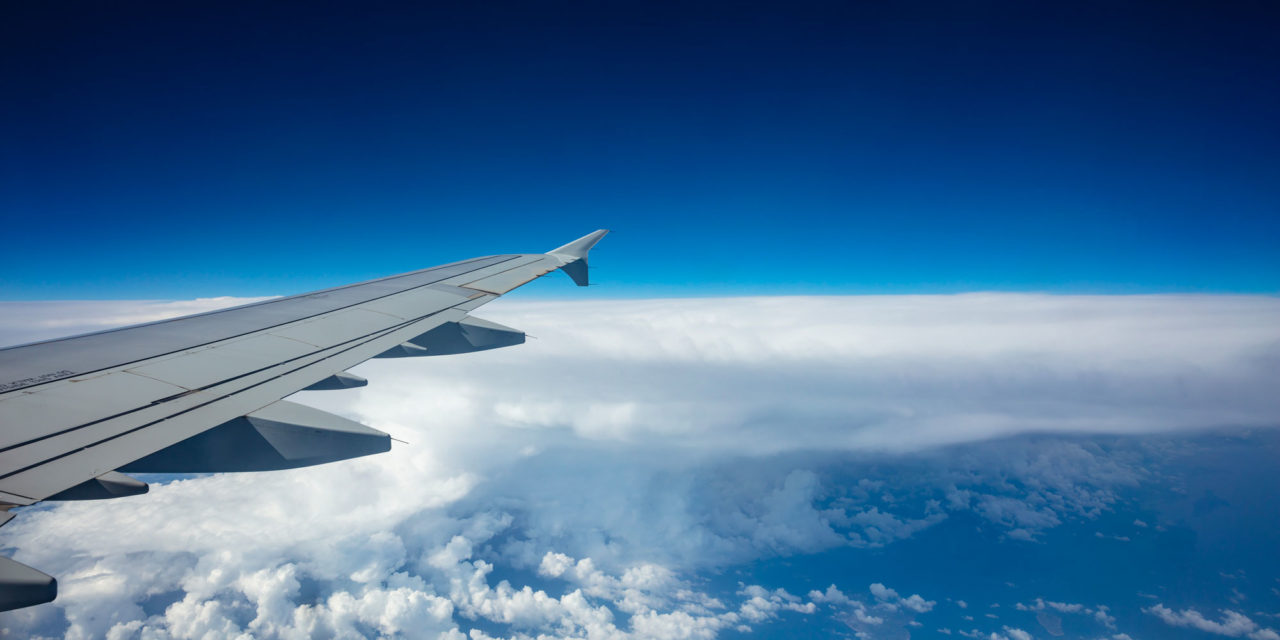Since the COVID-19 disaster, the European aerospace market and the European aviation markets are in tatters. Many people have not yet anticipate that situation but the crisis is worth worrying.
It has always been a risky activity to predict the future. Nevertheless, whatever may happen now, these twin economic sectors will be deeply shaken in the two to five coming years.
COVID-19 second wave
The foreseeable scenarios will be different depending on whether or not a second COVID-19 crisis happens or not.
If there is no huge second wave, the aviation industry and the aerospace industry can start reorganizing from now ; we are going to analyze this situation.
If there is a massive second wave of virus, and – who know ? – a third one, a fourth one, etcetera, the global economy (this, of course, includes the aerospace and the aviation businesses) are not yet as destroyed as they may be after the last wave.
Let’s imagine first that there is no massive comeback of this Chinese virus.
No confidence, no future
Here is a short list of companies (to name but a few) and the number of redundancies they plan (up to now):
- Airbus: minus 15.000 employees
- ATR: 200
- Daher: 1.300
- Sogeclair: 250
- AAA: 700
- Nexteam: 240
- Collins Aerospace: 300 (Ireland)
- Magellan Aerospace: 100 (UK)
- British Aerospace: 12.000
- Easyjet: 1.300
- Swissport: 4.500
- Virgin Atlantic: 3.000
- Ryanair: 3.000
- AirFrance: 7.500
- MTU Aero Engine: more than 1.000
- Lufthansa: 22.000
- Scandinavia Airlines SAS: 5.000
- Wizz Air: 1.000
Most European airlines have already announced that they will fire between 15 to 50% of their workforce. Depending on how fast or how slow companies and people will start travelling again, this will stop the bleeding or fuel it. This is a matter of confidence.
Individuals : Am I confident I can spend my summer holidays in Greece / Spain / Tunisia and so one without arriving in a COVIDfull area and without the threat of being blocked back home (flight cancellation / border closed again) ?
Business : Am I confident my team can travel around without being COVID-blocked on their way in / way back ? Am I confident too that the project I’m travelling for is strong / worth travelling ? (doubts on the survival on my business / my position / my client / my supplier / my project)
Up to now, only two European Airlines has disappeared: Flybe (in the UK) and Level (Austrian based airlines), subsidiary of IAG Group.
There are dozens of articles in the medias that predict that this list will increase. I’m afraid it could be right. Alternatively, some weak companies (not necessarily the smallest ones, for instance Alitalia) could be absorbed by stronger airlines. It all depend on the niche routes they are operating (and the airport slots they own).
All airlines are suffering. This means their suppliers are suffering too :
- aircraft suppliers (Airbus / ATR / UAC / Pilatus / Dassault),
- engine suppliers (Safran, Rolls-Royce, Saturn, MTU Aero Engines),
- OEM (Zodiac Aerospace, Daher, Liebherr Aerospace, Diehl Aerospace, GKN Aerospace, AERnnova, to name but a few),
- pilot schools and cabin crew training centers,
- Maintenance centers (MRO) and spare parts brokerage activities
- Catering
- Logistics
- Trade show organizations
For all these companies linked to the aviation market, a Darwin-style struggle for life is going to lead to bankruptcy / strategic reorientation / mergers and acquisition. Such a process will take several months, or even years if the air traffic is not recovering rapidly.
At the end of such a process, we shall face a renewed market, with less actors, less competition, and newcomers that will invade the market with innovating processes, products and services. This is true for airlines and all their suppliers.
It is not yet possible to say who is going to survive, who is going to disappear or be absorbed, thought we can guess that some major and strong airlines such as Lufthansa or IAG will survive.
Who is strong, who is weak ? that’s the question.
A strong company in the aviation business as well as in the aerospace business is a company with low indebtedness (when the COVID-19 crisis arouse in Europe, in March 2020), strong national market, some “niche market” businesses (such as specific routes for airlines or niche markets with – nearly -no competition), and hopefully some clients that are not/less impacted by the COVID crisis, such a Cargo activities or Defense activities.
As a matter of fact, the Air Cargo industry is at once suffering and benefiting of the present situation.
The Defense aviation industry is an non-cyclical industry. Sales come from military program plans which are sensitiveness to the crisis.
Air travel paradigm
Flying was trendy. If you fly, for business reasons or even better, for personal reasons, you were amongst the “happy few”. Living one day in Europe, one day in America, one day in Asia, with you “business class” club, whatever its name. Visiting foreign countries whether for a trade-show or some sunny holidays was the ultimate class.
Such paradigm was already attacked by all earth-and climate-friendly-activists. And there were already booming hashtags such as #flightshame on Twitter and other Social networks.
Such trend must not be underestimated as it seems to be widely spreading over the youngest generations.
In addition, the aviation and aerospace business now faces another alternative call it Zoom, Meet, Teams, or whatever online conference tool you may use.
In less than three months, all companies and all professionals, whatever business they are engaged in, have learnt how to use an online meeting tool.
These tools were already existing before but they came under the spotlights as never before. And what is the observation that everyone makes ? “It works.”
It does work, it’s user-friendly, and it is much more cheaper than face-to-face meetings.
Web meetings will not replace travels but it will challenge a large batch of them. Companies are no even more reluctant to ask their teams to travel abroad : it is expensive, time consuming, and not very trendy. Air travel may be reduced to (very) serious reasons only.
Is it going to cut professional travels by 1%, 10% of 25%? Nobody knows but it will reduce these cash-machine tickets all airlines were relying on. Such trend will fuel even more the difficulties of airlines for the coming years.
Getting rid of the crisis
The foreseeable path for the aviation industry and the aerospace industry over the three to five coming years is the following :
First step: Reduce the staff. A company with less activity (in a near future) than before cannot keep the same number of employees. It is a pity but companies have no alternative that to adapt their team to their amount of business. Any other political statement is either communism or bullshit (or both).
Second step: Adjust the organization to the new volume of business. This a multi-aspect management exercise. All aspects of the company are impacted (buildings, logistics, localization, finances, human resources and organization, sales, marketing, everything.) such massive change can be an opportunity for some people / companies but may looks like a nightmare to others.
Third step : Companies have to consolidate existing business. This step will come with active and harsh negotiations with clients and also with suppliers and subcontractors. Less volume of activities means fights for prices will be difficult, even deadly for some companies. When Airlines are cancelling or postponing dozens of orders of aircrafts, aircraft suppliers will have to reduce the production rhythm, then Tiers-one will also reduce their production, and so on. Time is going to be difficult for sales teams: their first duty is no to keep as much clients and volume of activities as possible.
Four step : One the company has been re-sized, as well as its volume of business, its production, logistic, suppliers, and so on, then. It is time to work again on growing the business. In such upset environment, opportunities may arise to purchase competitors or complementary activities. That’s external growth. Internal growth will have to wait until the airlines start ordering new aircrafts or until aircraft manufacturers decide to start producing new models.
These four steps will most probably take two to three years. It all depend on the volume of passengers in the airport other the next coming years.
Overview after the crisis
One can therefore imagine the aviation and the aerospace industries in 2025. There will be less airlines. Large airlines group will be even larger, with some smaller subsidiaries or brands for local markets or routes.
Less competition means more pricing power for airlines, with is good news for survival companies : tickets will then be more expensive.
Aircraft prices may increase: Airbus and Boeing are competing but are sole aircraft vendors now. Bombardier and Embraer do not exist any longer (as independent “commercial” aircraft manufacturer), UAC (the Russian manufacturer) and COMAC (the Chines one) are not yet ready to fully compete. The two manufacturers may try to increase their prices to restore their Ebitda. They will also tighten their after-sale contracts with OEM and MROs for the same reasons.
These prices increase will most probably be passed down on Tier-two suppliers and all aerospace suppliers (crushing their own margins).
Less passengers also mean less revenues for airports and surrounding activities (duty-free, restaurants, parking, hotels,…).
The usual +5% yearly traffic increase that the sector was used is no longer valid. It will take a few years (how many ?) to recover from pre-Covid-19 traffic, and even more to grow above that level.
Such global trends also mean that the aerospace sector will be less interesting for investors for several years.
Pilot school: still not enough pilots in Asia
Regarding pilot schools, cabin crew trainings and maintenance trainings, things will be slightly different. There were not enough place to train pilots, hostesses, engineers and technicians. Therefore, with the Chinese virus crisis, it is possible that supply and demand become globally equilibrate. However, the jobs will be located Asia, where the demand was really high. In America, Europe and the Middle East, we will face a surplus of pilots and bad habits, such as “pay to fly” are back already.
Wait and see
The aviation industry and the aerospace industry are presently facing a huge challenge, even bigger that the post September 11 attacks. Some may win, others may lose. Those with several activities such as Dassault (military and commercial aircrafts) or Brice (seats for aircrafts but also cars) or with huge Cargo activities (such as Lufthansa) or with good cash reserves (such as Lufthansa again) or with innovations and patents are in good position to become even bigger after the recovery.
It is too early for the final count. But it is already time to be careful. And inventive. Or both.







